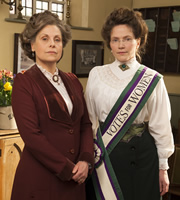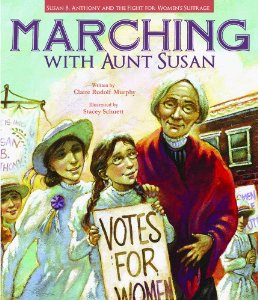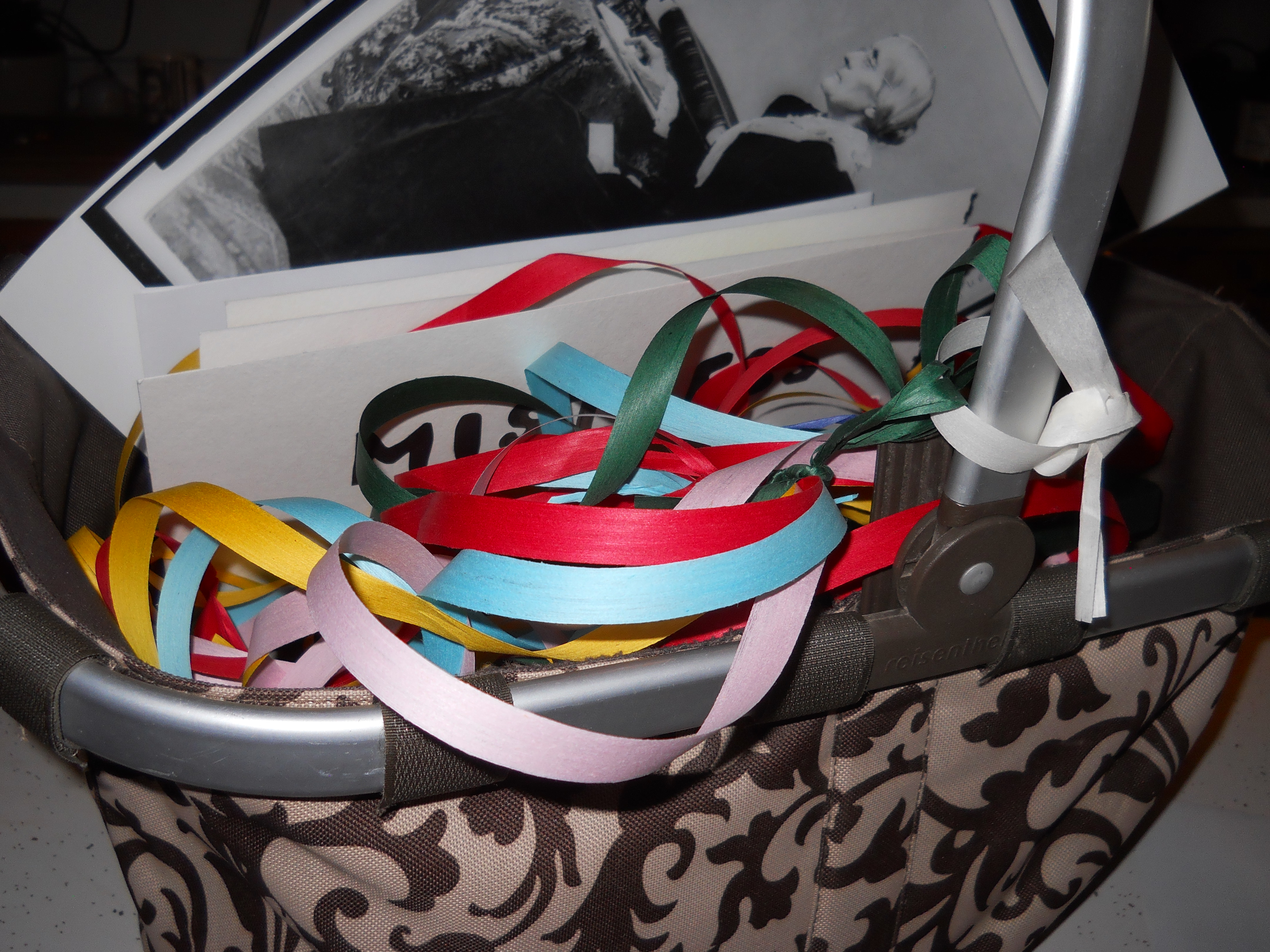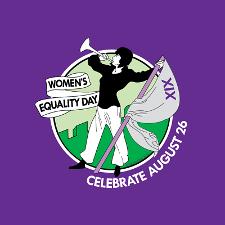 NEWS ALERT: Two suffrage programs on UK television. One is a documentary on suffragette Emily Davison TODAY that can be viewed online. The other is a three-episode suffrage sitcom, “Up the Women” (see trailer) that starts this coming Thursday, May 30th. See overview and episode summaries: #1, #2, #3. And now for Suffrage Bookshelf:
NEWS ALERT: Two suffrage programs on UK television. One is a documentary on suffragette Emily Davison TODAY that can be viewed online. The other is a three-episode suffrage sitcom, “Up the Women” (see trailer) that starts this coming Thursday, May 30th. See overview and episode summaries: #1, #2, #3. And now for Suffrage Bookshelf:
 ___________________________________
___________________________________
Marching With Aunt Susan: Susan B. Anthony and the Fight for Women’s Suffrage, by Claire Rudolph Murphy, illustrated by Stacey Schuett. 2011: Peachtree Publishers.
Review by Tara Bloyd
I thoroughly enjoyed Marching With Aunt Susan. Based on the 1896 campaign in California, the book focuses on events in the life of an actual ten-year-old girl, Bessie Keith Pond. In this story, Bessie’s belief in the suffrage cause is precipitated by two closely-related events: her father refuses to take her hiking with her older brothers because “strenuous exercise is not for girls,” and her mother suggests helping with a suffrage tea instead.
SUSAN B. ANTHONY, NOT OLD AND CRABBY AT ALL
Looking at a newspaper picture of Susan B. Anthony, Bessie thinks the suffrage leader looks old and crabby; she soon learns differently, though, and is inspired by Anthony’s statement that “Women’s votes can help change the world.” Bessie attends rallies, works in the suffrage office, visits a factory where young women work in poor conditions, marches in a parade, and more. I found the story, told in first person, compelling.
The book tells of the long, dedicated quest for votes for women, and is all the more poignant because it concentrates on an unsuccessful aspect of the long campaign. Bessie is lucky because her family is supportive – her aunt was a leader in both campaigns, her father buys her a new white dress when hers is destroyed by an egg splattered on it during a march and realizes over the course of the book that Bessie should be able to go hiking with the family, her mother is in a position to host teas honoring and attended by Anthony, etc.
But even from her privileged position Bessie still faces challenges: her friend’s father rules the family and won’t let her participate in marches, onlookers at the march both verbally and physically heckle participants, Bessie talks with factory girls her own age, and, of course, California’s men vote against suffrage.
REALISTIC, NOT SIMPLISTIC VIEW OF THE STRUGGLE
I appreciate that the book shows a realistic view of the struggle and how important it was to not give up even after major setbacks; Bessie’s mother is determined to learn how to ride a bike after the defeat (because “Aunt Susan says that a bicycle gives a woman freedom”). And the book ends with Bessie suggesting to her father: “Sunday there’s a rally for the next suffrage campaign. Come march with Mama and Me.”
The richly-colored illustrations are expressive and enjoyable and definitely add to the story. Even though it’s a picture book, Marching with Aunt Susan doesn’t talk down to readers. The historical information in the back of the book tells quite a lot in a fairly limited space: we learn about Bessie’s life, about California’s suffrage campaign and suffrage history in general, and about Susan B. Anthony’s life and work.
The section of Further Resources for Young Readers includes book and website recommendations, and photographs and copies of various documents are both on the endpapers and scattered through the historical information. I strongly recommend adding Marching With Aunt Susan to any suffrage library, and I think it would be an excellent introduction to the suffrage movement for any children who find stories more interesting than facts. (Wouldn’t that be almost all of them?)




0 Comments